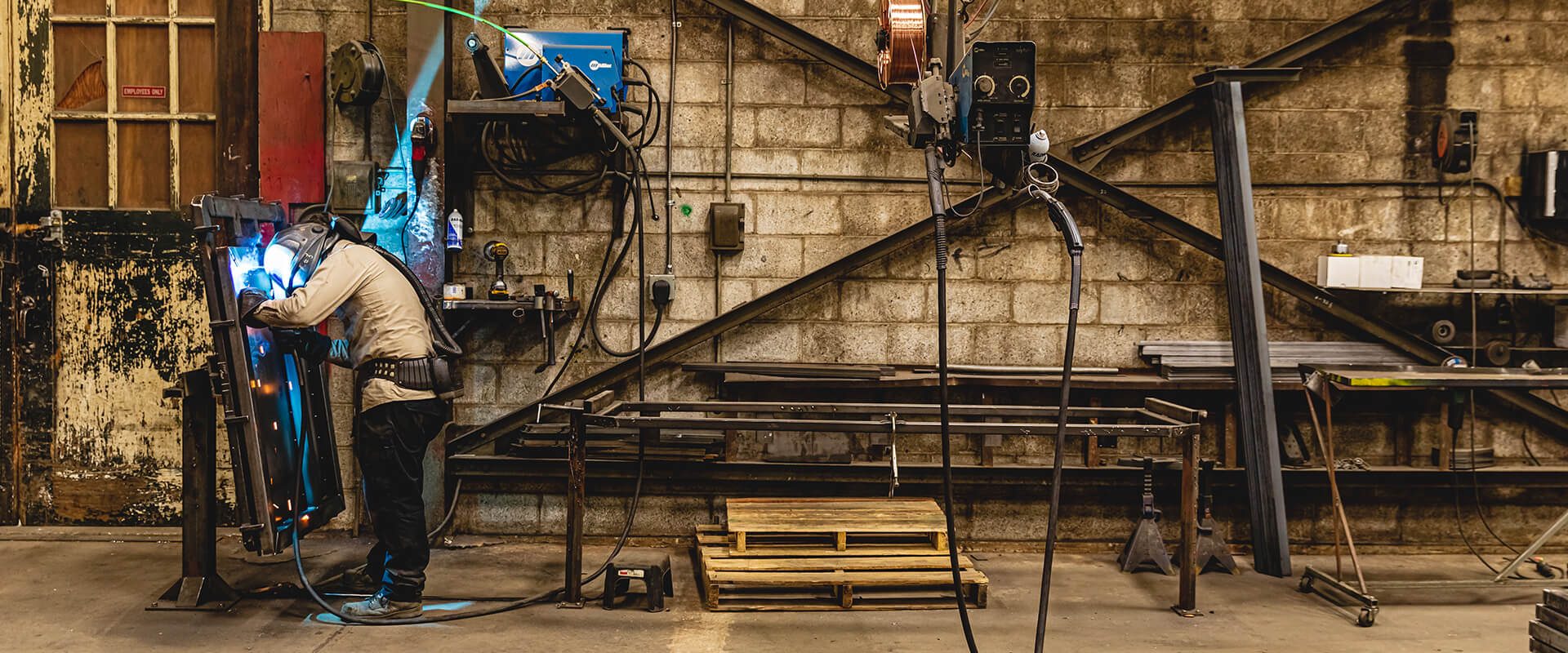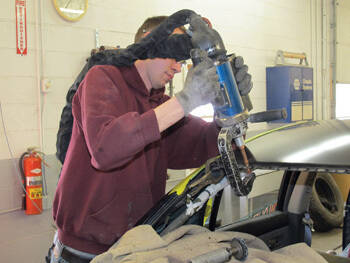Usual Welding Fixing Issues and Exactly How to Address Them Effectively
Welding repair work commonly come across an array of problems that can endanger the integrity of the final product. Common issues consist of insufficient infiltration, porosity, and imbalance, to name a few. Each issue presents one-of-a-kind difficulties that need specific approaches for resolution. Recognizing these problems is vital for welders aiming to enhance their abilities and results. This discussion will certainly explore these usual welding fixing issues and effective techniques to resolve them.
Inadequate Infiltration
Poor infiltration takes place when the weld metal falls short to completely fuse with the base product, causing weak joints and possible architectural failings. This concern frequently originates from inadequate warm input, inaccurate electrode angle, or incorrect welding rate. Welders may run into inadequate penetration as a result of a miscalculation of the needed parameters for a specific material thickness or type. Additionally, contamination on the base product's surface can hinder effective bonding, intensifying the problem. To resolve poor infiltration, welders need to guarantee ideal setups on their equipment and maintain a tidy work surface. Routine inspection of welds is suggested to recognize any deficiencies early, enabling timely modifications and the avoidance of jeopardized architectural stability in bonded settings up.
Porosity
Porosity is a common defect in bonded joints that manifests as tiny gas bubbles entraped within the weld metal. This issue can compromise the honesty of the weld, resulting in decreased stamina and possible failure under stress and anxiety. Montana Mobile Welding and Repair Welding. Porosity normally occurs from contamination, dampness, or inappropriate welding methods, which allow gases to leave right into the molten weld pool. To deal with porosity, welders ought to guarantee correct surface preparation, preserve a tidy functioning atmosphere, and utilize ideal welding parameters. Additionally, selecting the appropriate filler product and protecting gas can mitigate gas entrapment. Normal evaluation and testing of welds can help determine porosity early, ensuring prompt restorative activities are taken, consequently maintaining the quality and integrity of the bonded structure
Imbalance
Misalignment in welding can arise from numerous factors, consisting of incorrect arrangement and thermal growth. Understanding the source is crucial for reliable resolution. Numerous adjustment techniques are available to realign parts and assure structural stability.
Reasons for Imbalance
Welding imbalance commonly stems from a selection of underlying problems that can jeopardize architectural integrity. One primary cause is incorrect fit-up of elements before welding, which can cause spaces and irregular surfaces. Variants in thermal growth during the welding procedure can likewise lead to distortion, specifically if the materials being signed up with have different coefficients of development. Additionally, poor fixturing and clamping might fail to hold parts firmly in position, causing movement throughout welding. Improperly maintained tools, including welding makers and devices, may present incongruities in the weld bead, more adding to misalignment. Ultimately, driver error, originating from inadequate training or experience, can likewise play a significant function in producing misaligned welds.
Correction Methods Available
Dealing with misalignment properly needs a combination of rehabilitative strategies customized to the details concerns handy. One common technique is the usage of jigs or fixtures to hold parts in the appropriate position during welding, guaranteeing regular alignment. Furthermore, preheating the products can aid minimize distortion and improve fit-up. For significant misalignment, mechanical realignment techniques, such as utilizing hydraulic jacks or clamps, can be employed to correct the position prior to welding. Post-weld heat treatment may additionally be needed to ease tensions triggered by imbalance. Careful examination and adjustment during the arrangement phase can avoid misalignment concerns from coming to be substantial troubles, promoting a smoother welding process and improving overall structural honesty.
Distortion
Distortion is a typical challenge in welding that can occur from different factors, including unequal heating and cooling. Recognizing the root causes of distortion is crucial for carrying out efficient prevention methods. Resolving this problem not just boosts architectural stability however likewise boosts the overall top quality of the weld.
Root causes of Distortion
When subjected to the intense warm of welding, products often undergo changes that can bring about distortion. This sensation mainly develops from thermal development and contraction during the welding procedure. As the weld area warms up, the material broadens; upon cooling, it acquires, which can create inner anxieties. Furthermore, irregular heating throughout a work surface can worsen these anxieties, causing bending or flexing. The sort of material additionally plays a substantial function; metals with varying thermal conductivity and coefficients of growth may react in a different way, leading to unpredictable distortions. Poor joint style and inadequate fixturing can add to misalignment during welding, increasing the possibility of distortion. Recognizing these reasons is essential for effective welding fixing and avoidance techniques.
Avoidance Techniques
Effective prevention strategies for distortion throughout welding concentrate on managing warmth input and ensuring proper joint layout. Keeping a constant heat input aids to minimize thermal expansion and contraction, which can result in distortion. Utilizing techniques such as preheating the work surface can likewise minimize the temperature gradient, promoting uniform home heating. In addition, picking ideal joint designs, such as T-joints or lap joints, can enhance stability and lower stress concentrations. Applying correct fixturing to safeguard the workpieces in place further aids in keeping alignment throughout the welding procedure. Staggered welding series can distribute heat a lot more uniformly, stopping local distortion. By using these methods, welders can substantially decrease the likelihood of distortion and boost the total quality of their welds.
Splitting
Fracturing is an usual problem experienced in welding repair services, frequently arising from various variables such as improper air conditioning prices, product option, or inadequate joint preparation. The incident of fractures can greatly endanger the stability of the weld, resulting in possible failings throughout procedure. To resolve this problem, welders should first assess the origin triggers, guaranteeing that materials work and appropriately chosen for the certain application. In addition, managing the air conditioning price throughout the welding process is vital; quick cooling can generate tension and the original source lead to cracking. Proper joint design and prep work also add to decreasing the danger. Applying these techniques can enhance weld quality and longevity, inevitably lowering the possibility of splitting in finished weldments.

Incomplete Combination
A significant concern in welding repairs is incomplete fusion, which takes place when the weld metal does not sufficiently bond with the base product or previous weld passes - Fabrication. This issue can bring about weak points in the joint, potentially endangering the stability of the bonded framework. Aspects adding to incomplete blend consist of insufficient warm input, inappropriate welding strategy, and contamination of the surface areas being signed up with. To address this issue properly, welders should guarantee appropriate pre-weld cleaning and surface prep work, along with adjust their welding criteria to attain sufficient penetration and blend. Regular inspection throughout the welding process can likewise assist recognize insufficient blend early, enabling prompt rehabilitative measures to improve the general top quality of the weld
Overheating
While welding repair services can boost structural honesty, overheating provides a substantial obstacle that can result in material degradation. Too much warm during welding visit this site can alter the mechanical buildings of steels, resulting in decreased toughness, enhanced brittleness, and warping. This sensation is specifically important in high-stress applications where structural dependability is vital. Determining overheating can include aesthetic assessments for discoloration or distortion, as well as checking temperature during the welding procedure. To minimize the risks connected with overheating, welders should use appropriate strategies, such as managing warmth input, changing traveling speed, and making use of appropriate filler materials. Additionally, executing pre- and post-weld heat therapies can assist bring back product homes and enhance the general top quality of the fixing, guaranteeing long-lasting performance and safety and security.
Often Asked Concerns
What Are the Usual Signs of a Welding Flaw?

Exactly How Can I Check My Welds for Top quality?
To examine welds for quality, one can make use of aesthetic inspections, ultrasonic screening, and radiographic techniques. Each method ensures architectural integrity, recognizes problems, and validates adherence to defined criteria, ultimately enhancing the reliability of the bonded joints.
What Safety and security Preventative Measures Should I Take While Welding?
When welding, one should prioritize safety and security by putting on proper personal safety devices, guaranteeing correct air flow, protecting flammable products away, keeping a tidy work area, and understanding surroundings to avoid accidents and injuries.
Can I Fix a Weld Without Remodeling the Entire Joint?
Fixing a weld without redesigning the whole joint is possible, depending on the damage (Montana Mobile Welding and Repair Belgrade Fabrication). Strategies such as grinding, adding filler product, or using a welding procedure can efficiently view publisher site resolve particular flaws while protecting the surrounding framework
What Equipment Are Vital for Reliable Welding Repair Works?
Crucial tools for efficient welding repairs include a welding maker, cable brush, mill, protective equipment, clamps, and filler products. Each device plays an important duty in making certain quality and safety throughout the repair procedure. Porosity normally develops from contamination, moisture, or improper welding methods, which enable gases to run away right into the liquified weld swimming pool. Badly conserved tools, including welding devices and devices, may introduce inconsistencies in the weld bead, more adding to imbalance. When subjected to the intense heat of welding, products usually undergo changes that can lead to distortion. Breaking is a common issue come across in welding fixings, commonly resulting from different elements such as incorrect cooling rates, product choice, or insufficient joint prep work. A considerable issue in welding repair work is insufficient fusion, which happens when the weld steel does not sufficiently bond with the base product or previous weld passes.
Comments on “Best ways to deal with warping in Montana Mobile Welding and Repair Belgrade”